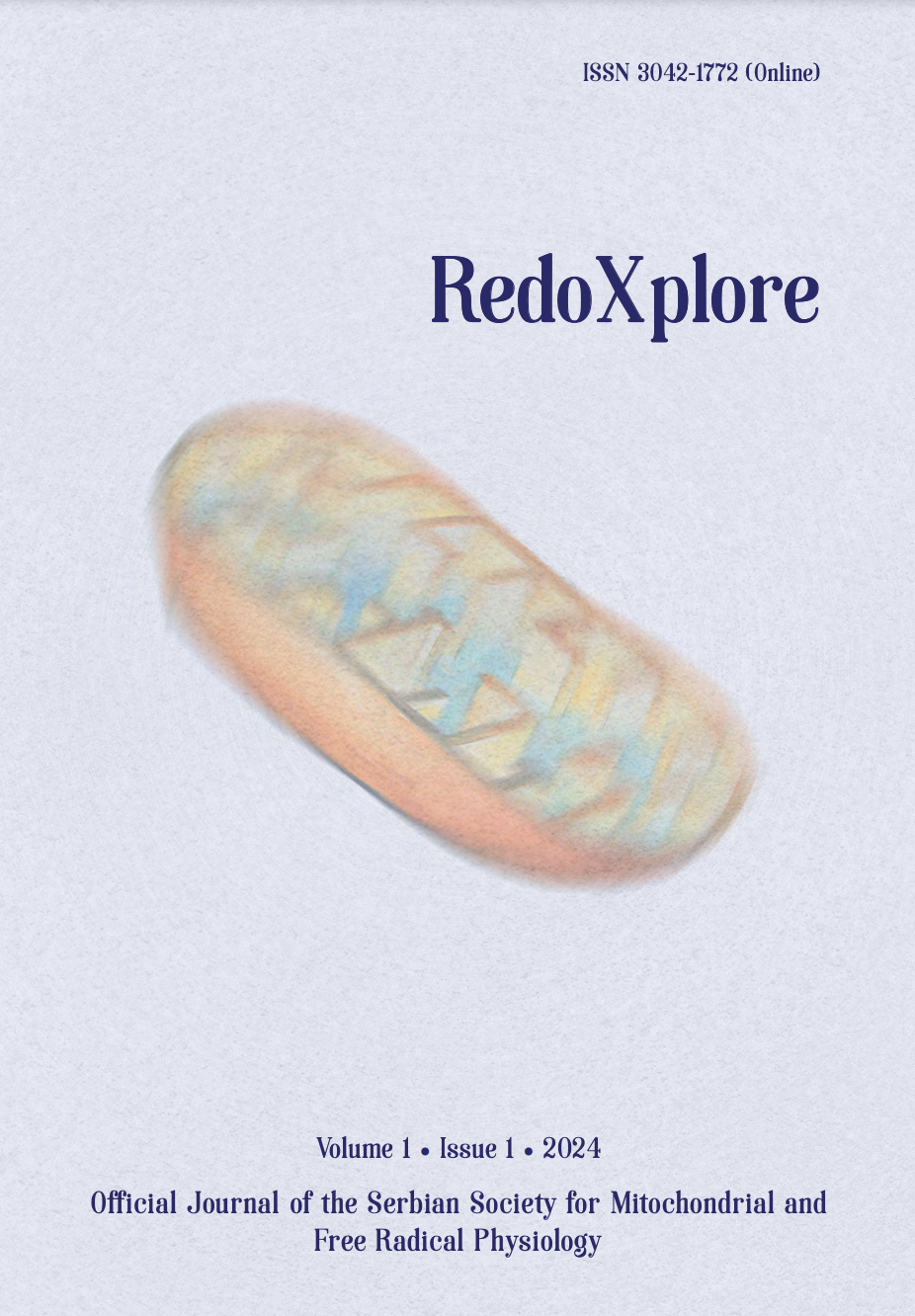
More articles from Volume 1, Issue 1, 2024
REDOX AND METABOLIC REPROGRAMMING OF BREAST CANCER CELLS AND ASSOCIATED ADIPOSE TISSUE - THE CORNERSTONES OF ADAPTIVE TUMOUR BEHAVIOUR
INSULIN MODULATES MITOCHONDRIAL STRUCTURAL AND FUNCTIONAL MOSAICISM IN BROWN ADIPOCYTES
NITRITE MITIGATES OXIDATIVE BURST IN ISCHEMIA/REPERFUSION IN BRAIN SLICES
NITRIC OXIDE, SUPEROXIDE AND PEROXYNITRITE – REDOX REGULATION OF THE CARDIOVASCULAR SYSTEM BY NITRO-OXIDATIVE STRESS AND S-NITROS(YL)ATION
DIETARY NITRATE AS PIVOT ON THE GUT MICROBIOTA-HOST REDOX COMMUNICATION
AFFECTING CUTANEOUS NRF2-KEAP1 PATHWAY BY UNIQUE EXOGENOUS AND ENDOGENOUS ACTIVATORS
The Institute for Drug Research, Hebrew University of Jerusalem , Jerusalem , Israel
The Institute for Drug Research, Hebrew University of Jerusalem , Jerusalem , Israel
The Institute for Drug Research, Hebrew University of Jerusalem , Jerusalem , Israel
Editor: Bato Korac
Published: 29.08.2024.
Keynote lectures
Volume 1, Issue 1 (2024)
Abstract
The human skin, being our outermost protective barrier, sustains continuous contact with the environment. As such, its cells must be kept in a state of constant alert against external increased oxidative stress and massive environmental insults (e.g. sunlight and UV radiation, air pollution, and mechanical stress). All these insults ultimately result in an impaired redox balance and increased cellular oxidation. One of the pivotal oxidation regulation mechanisms in the skin is the Nrf2–Keap1 pathway, and its activity leads to cutaneous redox maintenance which evidently sustains the principle of hormesis. We suggest that moderate environmental stressors and skin microbiome can provide the necessary continuous stimuli for the activation of the Nrf2 pathway. We also suggest that endogenous neurotransmitters play a major role in this activation.
Citation
Copyright

This work is licensed under a Creative Commons Attribution-NonCommercial-ShareAlike 4.0 International License.
Article metrics
The statements, opinions and data contained in the journal are solely those of the individual authors and contributors and not of the publisher and the editor(s). We stay neutral with regard to jurisdictional claims in published maps and institutional affiliations.






